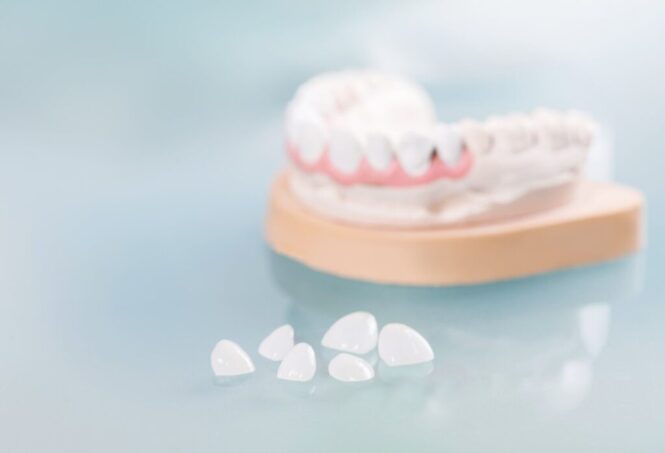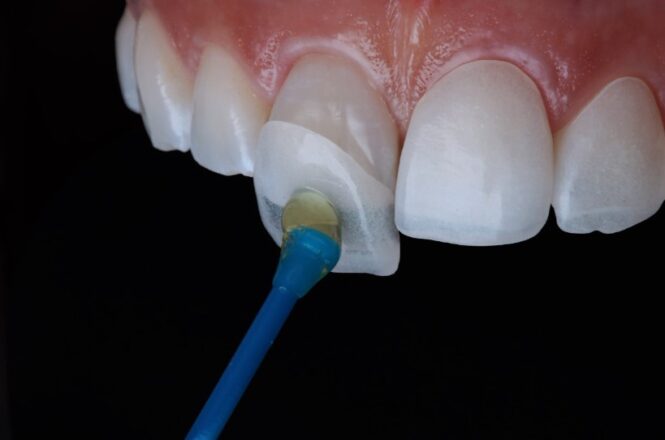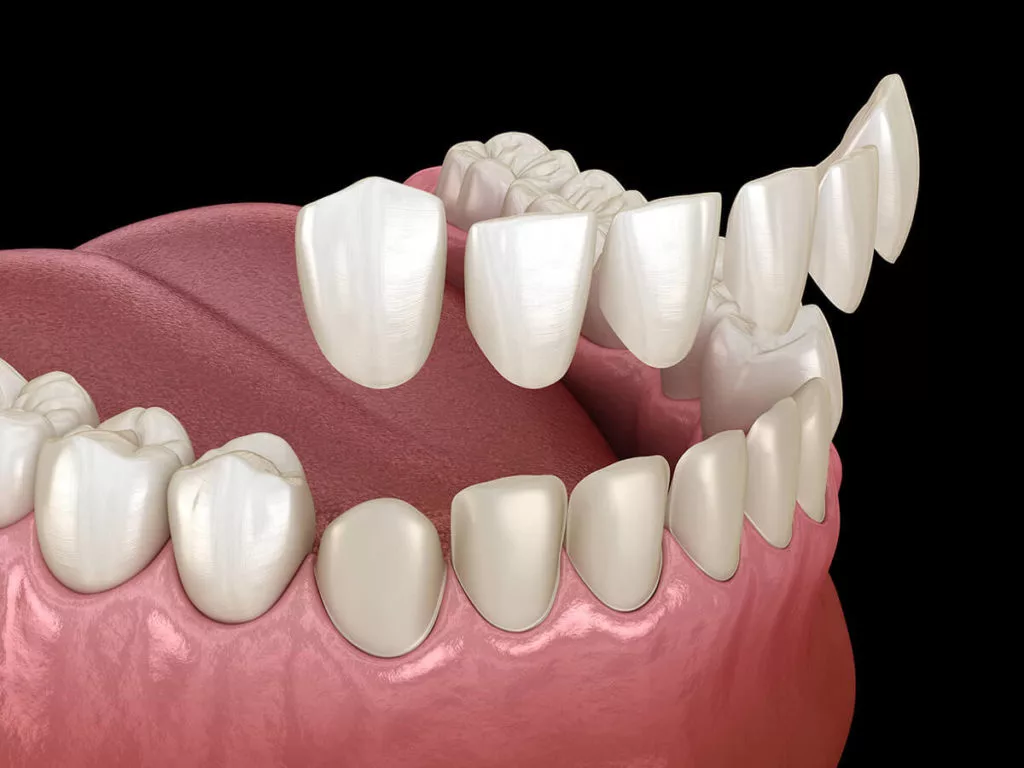Veneers make your teeth appear whiter and straighter, permanently bonded to the front of your teeth. The main difference between this and lumineers is that veneers’ preparation and application process is much longer. Applying Lumineers on your teeth requires less tooth preparation, but they do not last as long as veneers and are not as effective.
To decide which to get, you should visit specialist dental clinics that offer both sets of artificial dentistry, like the Dentakay dental clinic. The rest of this article will also provide as much information as possible on the differences between lumineers and veneers.
What Are Lumineers?
Usually called “no-prep” veneers, lumineers are a brand of veneer that are thinner, cheaper, and faster to apply. They are made of “ultra-thin” laminate, unlike traditional veneers, which are made of porcelain. Lumineers take less preparation and less advanced dental work to create than traditional veneers. So this is usually seen as a quick fix to whatever damages your teeth might have gone through.
Features of Lumineers

The preparation and application process takes a short time
Getting lumineers does not take that much of a lengthy process, and you only require at least two visits to the dentist after your initial consultation to complete the whole procedure. During the first visit, the dentist would only need to take an impression of what you desire your new teeth to be.
There is no trimming or prepping, so this first visit is usually the shortest. The impression is then taken to a DenMat dental laboratory since they are the creators of lumineers. There, your impression or mold will be customized to your preferences and be ready to be taken back in about 2 – 4 weeks.
In the case of lumineers, you do not need to wear around temporary teeth whilst you wait for the completion of your permanent veneers once your custom lumineers are ready, a second visit will be scheduled, and your dentist will permanently bond your new lumineers to your teeth: less prep and faster results.
Lumineers are not permanent
Lumineers, unlike veneers, are not permanent. Instead, they are semi-permanent. This means they can be easily removed after application without causing significant damage to your teeth.

They are more translucent
Lumineers are somewhat translucent and thinner than conventional porcelain veneers. If you have severely discolored teeth, lumineers are not a good option for you. However, lumineers can still be used to cover up or treat discolored and unusually shaped teeth, similar to traditional veneers. Lumineers are smooth and slick to the touch.
The cost of Lumineers is lesser than traditional veneers
The price of Lumineers can range from $800 to $2,000 per tooth, much less than traditional veneers. Therefore, lumineers are seen as the budget option for aesthetic dentistry. And in most circumstances, your insurance plan may not cover lumineers because they are not considered a medical necessity; instead, they are seen as elective cosmetic treatment.
Lumineers can last from 10 to 20 years
DenMat dental laboratory, the manufacturers of lumineers, claim that they can last for up to 20 years. Although some claim that lumineers only last up to 10 years before they get worn out and must be replaced. However, there has been very little long-term research conducted on the, so these claims may prove false.
Veneers
Veneers are an aesthetic treatment method used by dentists to cover up and fix discolored or broken teeth to give them a white and glossy appearance. They are traditionally made of porcelain material and require significant and lengthy preparation to prepare your teeth for permanent application.
Features of Veneers

The preparation time and application process are long
The application of veneers is divided into multiple steps and processes customized and suited to the same treatment or preference you need. The first step is the consultation, where your needs and treatment for you will be discussed between you and your dentist.
After that, your dentist will grind down the surface of your teeth to prepare them for the veneers. This is necessary because your teeth need to be thinner so the veneers will fit perfectly in your mouth. A mold or impression of your now prepared teeth will be made, and a temporary veneer will be created for you to wear for the time it will take for your veneers to be customized.
The customization is done in a dental laboratory where they will fabricate a custom set of porcelain veneers from the impression they send. This customization process usually takes approximately 2 to 4 weeks to be completed and sent back to the dentist. This step of the whole process may take longer depending on the number of teeth that are being fixed or treated.
Another visit will be scheduled when the veneers are delivered from the lab. Your dentist will use a particular bonding solution to remove the temporary acrylic teeth and cement the permanent veneers to your prepared teeth. The entire process may be lengthy, but it is very worth it for that permanent new dazzling smile.
Traditional veneers are permanent
The reason why this process is a permanent one is that after the application of the veneers, your natural tooth enamel is compromised. And there is no turning back from that point, which is why before embarking on this process, it is advisable to discuss the intricacies involved with an expert, so you know it all.

A great solution to damaged or severely stained teeth
Traditional veneers are best suited for those with broken, chipped, yellowed, or brown teeth. The veneers cover up these bad qualities perfectly and make them invisible to the eyes of the public. Moreover, since traditional veneers are not porous like natural tooth enamel, they are more resistant to stains like coffee and wine.
They are the perfect teeth, with a white, bright, and glossy appearance. Indeed a super model’s smile.
Traditional veneers price
Traditional veneer prices may average between $925 and $2,500 per tooth, depending on the severity of your case. Some dental clinics may also offer discounts if you are getting veneers for multiple teeth. In addition, you must note that regular insurance may not cover veneers in most circumstances since they are considered cosmetic. Still, since some cases may be medically necessary, your plan might cover it. Contacting your insurance provider to know whether your plan covers it is best.
They last from 10 years and above
Traditional veneers have an average 10- to 15-year lifespan and up to 20 years with proper routine maintenance. They are likely to last longer and are recommended if you want to go into aesthetic dentistry.
Conclusion
There you have it, the differences between lumineers and traditional veneers. Lumineers are your quick-fix, low-budget option for your teeth, while traditional veneers are more permanent and expensive. You should never forget to consult your dentist to find out if there are less drastic options for your teeth, like braces and alignment.
 Imagup General Magazine 2024
Imagup General Magazine 2024



